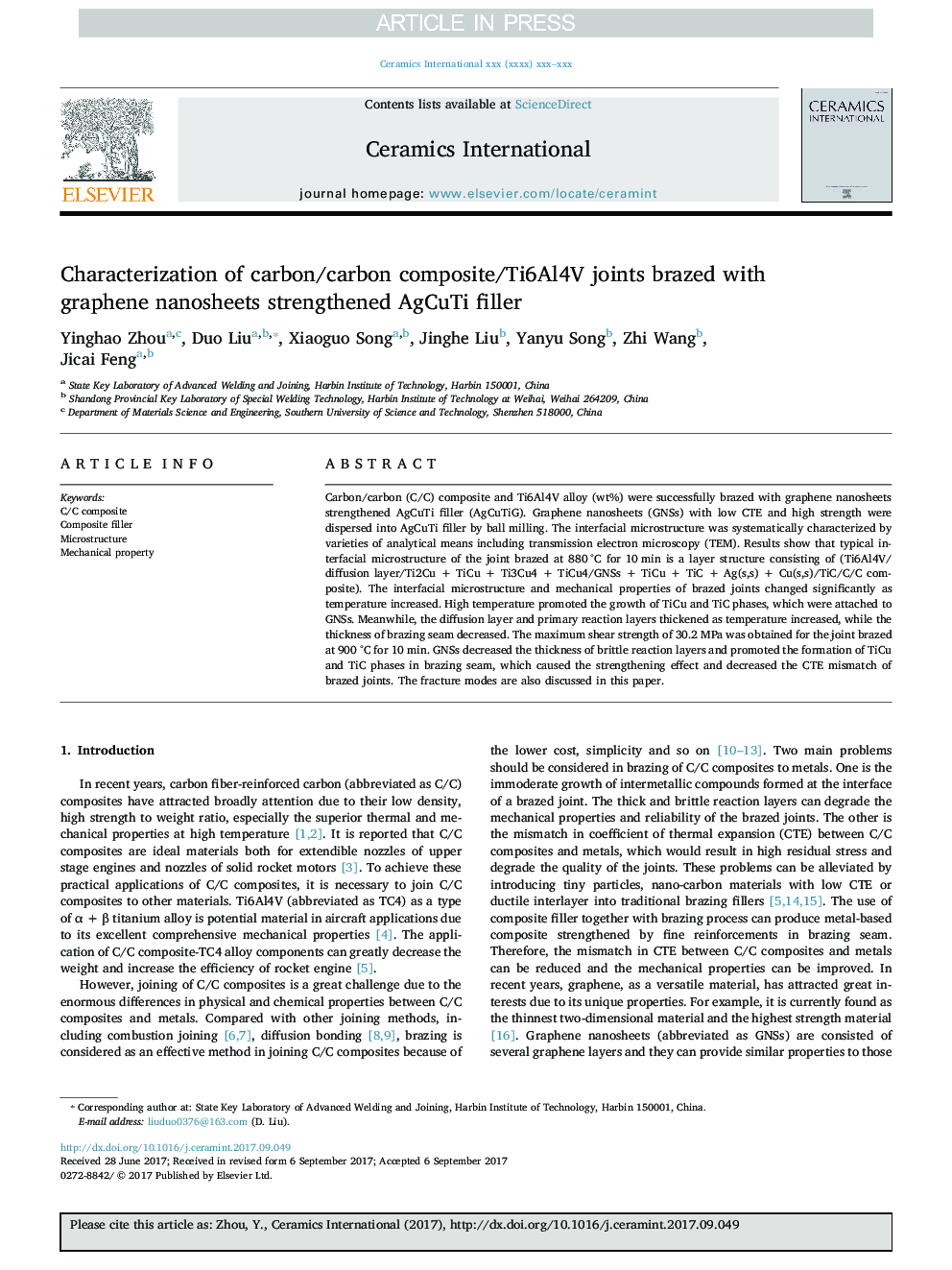| Article ID | Journal | Published Year | Pages | File Type |
|---|---|---|---|---|
| 5437304 | Ceramics International | 2017 | 11 Pages |
Abstract
Carbon/carbon (C/C) composite and Ti6Al4V alloy (wt%) were successfully brazed with graphene nanosheets strengthened AgCuTi filler (AgCuTiG). Graphene nanosheets (GNSs) with low CTE and high strength were dispersed into AgCuTi filler by ball milling. The interfacial microstructure was systematically characterized by varieties of analytical means including transmission electron microscopy (TEM). Results show that typical interfacial microstructure of the joint brazed at 880 °C for 10 min is a layer structure consisting of (Ti6Al4V/diffusion layer/Ti2Cu + TiCu + Ti3Cu4 + TiCu4/GNSs + TiCu + TiC + Ag(s,s) + Cu(s,s)/TiC/C/C composite). The interfacial microstructure and mechanical properties of brazed joints changed significantly as temperature increased. High temperature promoted the growth of TiCu and TiC phases, which were attached to GNSs. Meanwhile, the diffusion layer and primary reaction layers thickened as temperature increased, while the thickness of brazing seam decreased. The maximum shear strength of 30.2 MPa was obtained for the joint brazed at 900 °C for 10 min. GNSs decreased the thickness of brittle reaction layers and promoted the formation of TiCu and TiC phases in brazing seam, which caused the strengthening effect and decreased the CTE mismatch of brazed joints. The fracture modes are also discussed in this paper.
Related Topics
Physical Sciences and Engineering
Materials Science
Ceramics and Composites
Authors
Yinghao Zhou, Duo Liu, Xiaoguo Song, Jinghe Liu, Yanyu Song, Zhi Wang, Jicai Feng,
